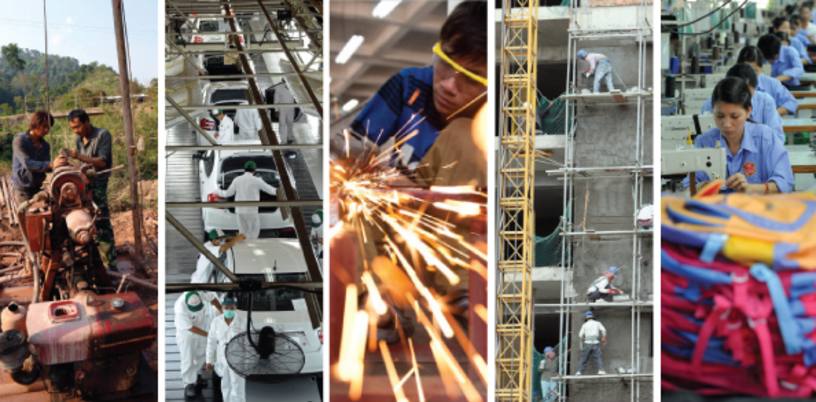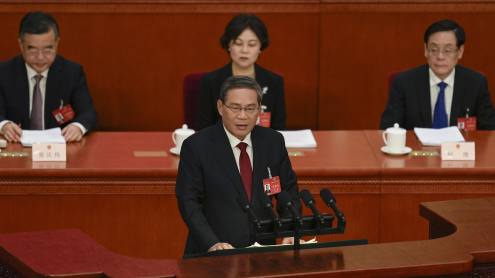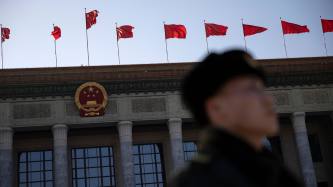The Greater Mekong Delta area has become one of the most exciting economic regions worldwide. Comprising Cambodia, Laos, Myanmar, Thailand and Vietnam, it harbours enormous potential for growth. With strongly diverse population volumes, labour costs, human capital and political backgrounds, this sub-region is far from monolithic.
The economies of the countries that make up the Mekong Delta are collectively growing at an average rate of 6% per year, with some forecasts predicting growth of more than 7% until 2020 and beyond. This gross domestic product (GDP) growth is even more remarkable when taking into account the area’s political and social turmoil. "Most of these countries have experienced very turbulent and tragic parts of their history [recently] but have managed to come out of them [transformed]," says Grant Knuckey, CEO of ANZ Royal Bank in Cambodia and managing director of ANZ Banking Group in Cambodia, Laos and Myanmar.
FDI driver
Foreign direct investment has been a key driver of growth in the Mekong Delta. Thailand became its first FDI recipient in in the 1980s, when the strong appreciation of the yen pushed a number of Japanese companies to relocate abroad. “Thailand was the only available country in the area at the time while other states faced severe political problems,” says Charl Kengchon, managing director at Thailand-based economic research firm Kasikorn Research. Since then, a mixture of manufacturing, agricultural and service sector investments have poured into the Mekong Delta region. But while foreign investment is proving extremely beneficial to those countries with growing markets – Vietnam, Laos, Cambodia and Myanmar – a country such as Thailand, with a more mature economy, faces different challenges in renovating its growth path and FDI inflows.
In the past two years, Japanese firms have become key investors across the Mekong Delta sub-region. The government’s reflation policy has generated significant liquidity, which Japanese investors are transferring abroad for yield pick-up (domestic one-year bank deposit rates are as low as 0.2%), and Mr Knuckey believes that Japan’s heavy presence in the region could also have geo-political significance. "Japanese companies are looking for diversification away from China, where they have already committed," he says.
The region’s economic success has largely relied on free capital flow and cheap labour. In the long term, both strategies, if not keenly monitored, could prove detrimental. However, Mr Knuckey remains positive. "The nature of capital flows in [the area’s] manufacturing sectors are relatively sticky since they translate into physical assets. In most emerging markets, capital inflows are in the form of equities and bonds and therefore are not genuine direct investments," he says. Mekong Delta countries will also have to raise labour skills while gradually increasing wages to avoid China’s labour market difficulties and ultimately becoming the 'factory of the world'.
Myanmar excitement
Myanmar is possibly the most exciting country in the Mekong Delta region at present. It has a population of an estimated 61 million people – a consumer market yet to be fully tapped – and is extremely resource-rich. It also lies at the heart of the Mekong Delta area, and its inter-country trade links bode well for future growth. Labour is still cheap and the new government, led by president Thein Sein, has shown strong commitment to ending the country’s economic isolation and accommodating foreign capital inflows. A McKinsey Global Institute report says that despite being one of the poorest countries in the region, Myanmar’s annual GDP could balloon from $45bn in 2010 to more than $200bn in 2030 with adequate reforms.
Japan has already put a foot in the door by signing an investment treaty with Myanmar in December 2013 and by pledging Y63bn ($613m) in fresh aid. Some see this as part of a geopolitical power struggle with China in south-east Asia. By the end of 2013, China was still the largest investor in Myanmar with its overall investments worth $14.2bn while Japan's totalled $292m. However, Japan's involvement is increasing. Japanese investors pledged $54m between April 2012 and April 2013 – 10 times the figure for the previous fiscal year. Chinese businesses committed to investments worth $407m for the same time period, significantly lower than the $12bn invested overall between the fiscal years of 2008 and 2012
Most of Myanmar’s FDI is still heavily focused on manufacturing. However, market participants expect investment to come to the service sector soon. ANZ has set up a Myanmar representative office in June 2013, and although Asia-Pacific banks still account for the bulk of financial service investment in Myanmar, Mr Knuckey believes Western banks might soon follow. "You don't really see European or US banks expanding in South America or Africa, for example. But a market such as Myanmar will attract Western financials in time. It already is the case in Thailand,” he says.
Despite Myanmar’s strong potential, the country still faces significant challenges. The transition from an isolated to an open economy will be far from easy. Significant progress in infrastructure, market regulation, political stability, the rule of law and public institutions is necessary to optimise the country's potential. Increasing the labour force’s skill, education and productivity will also be key to achieving strong economic growth.
Cambodia's consistent growth
Investor interest in Cambodia has grown significantly in the past decade, thanks to political, social and economic stability, as well as strong GDP growth. The country's economy has been growing at an average of 8% a year in the past 10 years. “You don’t see a 20% GDP increase and a bubble developing in Cambodia. Growth has been consistent and inflation has remained stable at 3% to 3.5% in the past five years,” says Michael Lor, CEO of Canadia Bank, the largest domestic lender in Cambodia.
The country’s dollarisation is mostly responsible for low inflation rates (90% to 95% of the riel is dollar-denominated and all major trades are done in dollars) and high FDI inflows (investors do not suffer currency exchange losses). However, dollarisation does pose questions on sovereignty. "You're basically importing monetary policy. Most countries would not be comfortable with long-term dollarisation, and neither is Cambodia. It wants its own currency as means of payment and exchange. The [de-dollarisation] process, though, needs to be organic and gradual," says Mr Knuckey.
Free capital flow has also been crucial to boosting Cambodia's FDI, which has almost doubled from $901.67m in 2011 to $1.56bn in 2012, with Japanese investors having been at the forefront of this growth. Most foreign investment has targeted the garment manufacturing industry to take advantage of Cambodia’s low labour costs and young population (60% to 70% of Cambodia's population is under 30 years of age). A university graduate in Cambodia earns on average $200 to $250 a month and the indigenous Cambodian labour force increased from 7.88 million workers in 2009 to 8.43 million in 2012.
Although an extremely liberal investment environment and low labour costs are not a recipe for long-term development, market participants are not worried. “Cambodia needs to develop fast and it requires lots of FDI. Accommodating foreign investment is a lesser evil now since it is building the country, boosting growth and improving labour productivity,” says Mr Lor, a point backed up by Channy In, president and group CEO at Phnom Penh-based Acleda Bank, who says: “So far, this has been an opportunity for Cambodia, not a risk.”
However, as in many developing countries, a key challenge with FDI is to ensure that it benefits those areas of the economy that need developing (infrastructure and labour skills) to ensure sustainable growth. Encouraged by the Cambodian government, Japanese and Chinese investors have focused on improving the country's hard infrastructure in the past 12 to 24 months. Meanwhile, companies such as Japanses multinational Minebea have recently invested significantly in staff training. “Cambodia has learned lessons from China and Vietnam. We are aware and are prepared to move to the next level [in producing highly skilled labour]. Vocational skill training will benefit the majority of Cambodians,” says Mr In.
Reform-minded Vietnam
Vietnam is also facing crucial FDI and labour reforms. However, it has suffered large swings in inflation rates of late and as a single-party socialist republic it is still grappling with the privatisation of state-owned enterprises. The inflation rate peaked at 15% in 2011, before dropping to between 6% and 7% in 2014, thanks in large part to government intervention and a looser monetary policy.
Following high volumes of low capital and bogus investments in the property market between 2007 and 2009, Vietnam is looking to improve its FDI monitoring institutions. “We should be focusing more on quality than quantity,” says a divisional head at local lender Sacombank. China, Taiwan, South Korea and Japan are key investors in Vietnam’s textile, IT and manufacturing sectors, but the bureaucracy involved in setting up a foreign-owned firm in the country, which can still take up to five years, is also in need of reform.
While FDI is contributing considerably to Vietnam’s GDP, it is also posing a threat to the domestic economy. The contribution of firms such as Samsung, Nokia and Intel to the country’s exports grew from 40% in 2009 to 60% so far this year. This is also causing smaller local exporters, which the domestic economy relies upon, to be squeezed out of the export market. “This surge in FDI export contribution does not mean the local economy is stronger. FDI firms largely import material, produce in Vietnam and then export,” says the Sacombank divisional head. Market participants are keen to ensure that foreign firms produce high-quality, high-tech goods, while hiring more locals and transferring technology and know-how to their local partners.
Vietnam is also struggling to improve the efficiency of its local economy, particularly when it comes to privatising state-owned enterprises (SOEs), which are still present in all key sectors. The privatisation process began 10 years ago but produced few results, since an SOE could only be sold to a foreign investor at a higher book value than its stock price. However, prime minister Nguyen Tan Dung announced this year measures to quicken the privatisation process. “We need true equalisation between private firms and SOEs to boost competition and the local economy,” says the Sacombank division head.
As the most populous nation in the Mekong Delta region, Vietnam faces significant challenges in the labour market. The government attempts to increase the minimum wage annually, but labour is still cheap in the country and will be for the next three years, according to the Sacombank division head. The dong’s depreciation against the US dollar still does not allow increases in the minimum wage to sufficiently offset costs of living. However, the Vietnamese government’s stark awareness of China’s problematic labour market is a strong motivator for effective domestic reform, say market participants.
Laos's nascent development
Like Vietnam, Laos is also a single-party socialist republic. The state still has strong influence on its free-market, yet heavily regulated economy. Despite strong average annual economic growth of 7% since 2008 and increases in FDI, an under-developed infrastructure, immature capital markets, low labour skills and a very weak local currency remain problematic. “We’ll probably see stronger development in the next 10 years,” says the Sacombank divisional head.
FDI inflows into Laos have been on the rise since the 1980s. Foreign investors mainly focus on energy and agriculture (according to World Bank data, the primary sector accounted for 28% of Laos’s GDP in 2012). Rich in mineral wealth, Laos offers strong potential for the resource extraction industry, while manufacturing FDI has also been on the rise. “Laos has been increasingly benefiting from the supply chain in the region. Manufacturers have started setting up component production facilities, whose goods are then sent to Thailand for final assembly,” says Mr Knuckey.
Laos’s capital markets are also growing. The government, which has printed US dollar and Thai bhat paper in the past two years, remains the main issuer in the nascent bond sector. However, market participants feel corporates will soon join the market. The banking industry is also developing, although lending practice frequently fails to meet the sub-region’s environmental or social management standards.
Thailand's revamp
Thailand is the Mekong Delta’s most mature economy. Its export-led, FDI-attracting growth model has been an example to its neighbours over the past 30 years. However, these same countries have now become Thailand’s competitors. “Instead of relying on FDI reception, we should become investors ourselves and follow Malaysia’s and Singapore’s example,” says Mr Kengchon at Kasikorn Research.
The country has also experienced fluctuating GDP levels due to the financial crisis, natural disasters in 2011 and the softening of China’s economy in 2013. For many market participants it is time for Thailand to reconsider its growth strategy, though the unresolved political deadlock in the country is exacerbating Thailand’s challenges. Investors, especially those from Japan, and rating agency Fitch have expressed concerns. “If the deadlock continues, Thailand’s rating might be affected,” says Mr Kengchon.
The speed of ballooning household debt is also worrying Thai economists. Total household debt has risen from 45% of GDP in 2003 to 80% of GDP in 2013. “The ratio itself is common to Association of South-east Asian Nations countries, but it is the speed of growth that is alarming,” says Sutapa Amornvivat, chief economist at Siam Commercial Bank. This debt is typically found in the poorest households, which are indebted to government banks or specialised financial institutions.
Thailand in also facing an ageing population problem. “Our total factor productivity [TFP] has been decreasing in the past 10 years and we cannot rely on demographics in the future. We must focus on capital investment, improve the quality of our institutions and increase private and public investment to sustain TFP growth,” says Ms Amornvivat.
FDI in Thailand is mostly focused on manufacturing, but rapid technological change has pushed companies in the electronics sector to relocate elsewhere. “Due to drops in sales, those firms investing in hard disk production, for example, have left Thailand to focus on cell phones and tablets abroad,” says Mr Kengchon. The challenge for Thailand is to provide sufficient research and development as well as train its labour force to capitalise on technological advancement and maintain its competitiveness in the region.
But while some firms are exiting the country, Chinese investors are making new plans for Thailand. A number of companies are increasingly interested in extracting and repatriating Thai raw materials, such as rubber, while others are setting up factories to produce goods destined for export in south-east Asia. One of these, Dongfeng Motor Corporation, recently announced that it will set up a pick-up truck production base in Thailand to target the export markets in other countries of the Greater Mekong Delta, namely Cambodia, Laos and Myanmar.












